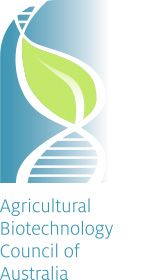6 September 2014. Source: www.fwi.co.uk/articles/06/09/2014/146567/genetically-modified-crop-harvested-at-rothamsted.htm
Britain’s first trial of GM crops enriched with nutrients to improve health has been successfully harvested.
Following a groundbreaking field trial, the first camelina (false flax) crop genetically modified to produce seeds rich in omega-3 fatty acids was harvested at Rothamsted Research on Friday (5 September).
The trial, sown in May, is the first field trial in the UK to test plants in which the genetic structure has been altered to produce health-boosting properties. For the experiment, genes taken from algae were inserted into the plants to make marine oils.
…
“It’s a landmark step,” an emotional Prof Napier told Farmers Weekly. “It’s the first UK trial of a GM crop with a natural benefit trait in it.
“This is the culmination of at least a decade’s worth of fundamental research. We know that the engineered crop will produce the omega-3s in the glasshouse.
“We wanted to see whether the crop would grow well in the real world – in the field…
He added: “We will do the biochemical analysis of the seed oil to confirm the presence of the fish oils. So far, everything looks promising.”
…
Next year, Prof Napier plans to double the size of the field trial and sow the crop earlier with a higher seed rate to see if it can produce even more omega-3 oils.
If the trials are successful, plant oils will be fed to farmed fish, rather than feeding on algae, and the oil content of the fish will also be analysed.
Plant oil extracted from the seeds could also be used as an omega-3 supplement in yoghurts or spreads.
The GM crop could eventually be grown commercially in the UK, although that is “at least a decade away”, say researchers.
The field experiment is seeking to provide a healthy, alternative and sustainable terrestrial source of omega-3 oil, which is known to lower the risk of chronic conditions such as heart disease, cancers, and arthritis.
The results of the trial will be published after a peer review in an Open Access scientific journal later this year.

